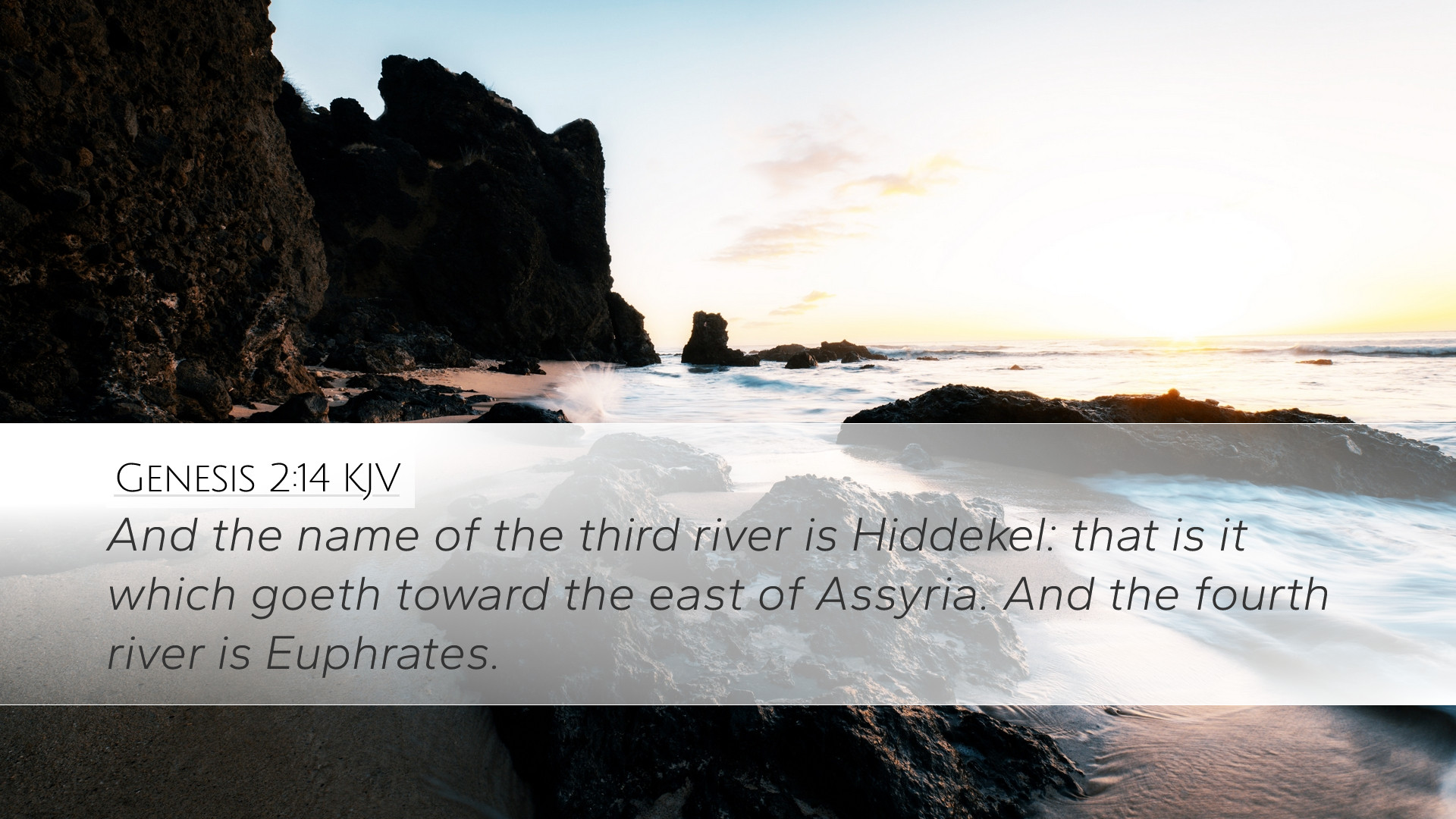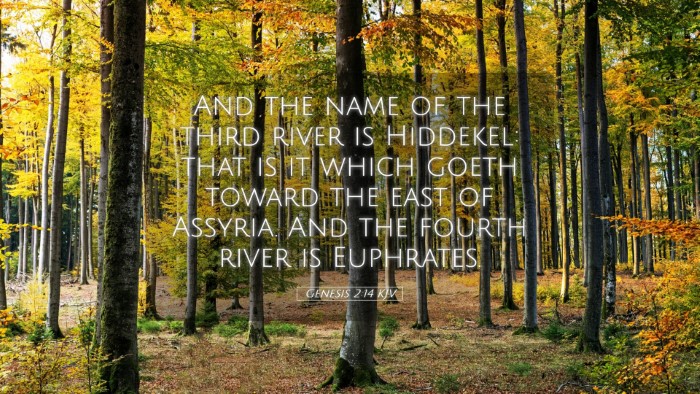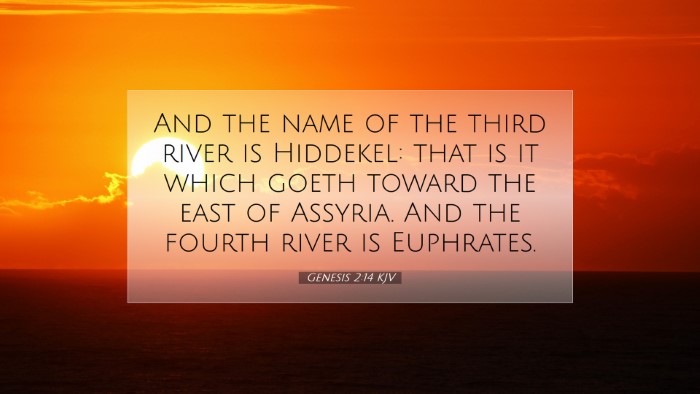Commentary on Genesis 2:14
Verse: “And the name of the third river is Hiddekel: that is it which goeth toward the east of Assyria. And the fourth river is Euphrates.”
Contextual Overview
This verse is set within the broader narrative of the creation account in Genesis, where Moses articulates the origins of the world and humanity. Notably, it mentions rivers that flow from Eden, signifying both the abundance of earthly resources and the divine order established by God at creation. This provides theological and geographical insights that are essential for understanding the unity of God’s creation.
Exploration of the Rivers
The specific mention of the rivers in Genesis 2:14 has long been a subject of scholarly interest. The rivers listed—Hiddekel and Euphrates—are critical not only for their physical characteristics but also for their symbolic roles in the biblical narrative.
The Hiddekel (Tigris)
Matthew Henry comments on the significance of the Tigris, indicating that its name (Hiddekel) represents swiftness. The river is noted for its rapid course, which could be an emblem of the swift providence of God in sustaining life and order in creation. Additionally, it reinforces the concept that God’s creation brings forth life abundantly.
The Euphrates
Albert Barnes elaborates on the Euphrates, suggesting its noteworthy stature among the rivers of the world. He points out that this river has been critical throughout biblical history, symbolizing peace and prosperity as it irrigates the Fertile Crescent. The mention of these rivers in the narrative underscores the connection between earthly blessings and divine favor, resonating with covenant themes seen later in Israel’s history.
Theological Implications
This verse goes beyond mere geography; it offers profound theological insights:
- Divine Provision: The rivers signify God's abundant provision for His creation, serving as a reminder of His care and the life-sustaining resources He has established.
- Divine Order: The specific naming of the rivers establishes a divine order in creation. Each river’s course is purposeful, reflecting God's sovereignty over nature.
- Symbolism of Life: Rivers are often viewed symbolically as sources of life and fertility, further emphasizing God’s intention for humanity to thrive in the garden of Eden.
Insights on Geography and History
Adam Clarke provides a comprehensive understanding of the geographical context, indicating that these rivers played a crucial role in the ancient Near Eastern civilizations. The Tigris and Euphrates, part of the Mesopotamian landscape, were central to the development of agriculture, settlement, and culture. The knowledge of these rivers helps in identifying the biblical Eden as a literal place, establishing a geographical anchor for theological themes.
Literary Structure and Symbolism
The literary structure of Genesis 2 includes the use of geographical elements, which serve to enhance the narrative. The rivers create a framework that makes the Garden of Eden relatable and tangible to the reader. The mention of Hiddekel and Euphrates can symbolize the tension between the earthly and the divine, with these rivers representing both the physical sustenance provided by God and the spiritual richness found in relationship with Him.
Application for Today
In reflecting on Genesis 2:14, pastors and theologians can draw practical applications for their congregations:
- God’s Providence: Remind believers that just as He provided for creation then, He continues to provide for us now, urging them to trust in His provision.
- Creation Care: Highlight the importance of stewardship over God’s creation, advocating for responsible engagement with the natural world.
- Spiritual Life: Encourage congregants to seek the ‘rivers’ in their own lives that sustain spiritual growth and well-being, whether through community, worship, or scripture.
Conclusion
In conclusion, Genesis 2:14 offers a rich tapestry of theological, literary, and practical insights. By integrating the thoughts of Matthew Henry, Albert Barnes, and Adam Clarke, we uncover a multi-faceted understanding of this passage. The interplay of geography and theology underscores the significance of God’s creation and offers timeless lessons on divine provision and stewardship that remain relevant to both modern readers and ancient audiences.


